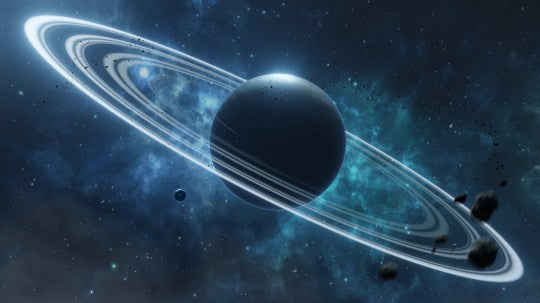
New Hypothesis Explains Why Uranus Is Lopsided.
Share
Uranus.
Possibly the most sought after and endearing planet prodded with questions.
But the most interesting is how the icy gas giant came to be so slanted on its near-perfect 90 degrees.
This angle means the planet spins almost vertically and its equator - as we understand the term on Earth - runs almost straight up and down!
While most planets in our system have their poles up and down, Uranus has to go and be a rebel.
Like a typical teenager, this isn't enough sticking it to the man so Uranus had to go and make its axis 98 degrees relative to its orbit spinning in a clockwise direction whilst all other planets rotate anti-clockwise.
Check out this clip to see just how sloppy the axial tilt of Uranus is.
The prevailing theory was that "something" collided with Uranus hard.
So hard that Uranus was never the same and gave us the planet we recognise today.
The issue many astronomers had with this theory is that over 90 degrees is a long, long way to put a planet out and any object big enough to do so would almost entirely annihilate most of the planet itself.
But a new theory has presented the theory that Uranus' rings may have something to do with it.
Yep, rings.
While they're not as gloriously spread apart as Saturns awe-inspiring rings, Uranus' are 4.5 billion years old and as visible as an air biscuit dropped by the dog.
Astronomers Zeeve Rogoszinski and Douglas Hamilton from the University of Maryland hypothesise that the faint rings of Uranus may have been as proud and prominent as those of Saturn.
So much so that the rings may have caused the planet to "wobble" on its axis like the dying spins of a spinning top.

In the field of astronomy, the term used for creating an axial tilt over time is known as 'precession' whilst doing so and orbiting the sun is known as 'orbital precession'.
The two astronomers created computer models that would calculate how such a tilt would occur over the planet's lifetime.
What they found was that a 70-degree tilt was possible within the planets life, but the prevailing theory of an impact - albeit a smaller one - would be enough to further tilt Uranus past 90 degrees.
Their work has been published in the Astrophysical Journal and can be found here.
By changing the requirements of an impact tilting Uranus, the astronomers found a much more likely scenario playing out.
While we still don't know what got Uranus so out of shape, this theory has provided a more solid knowledge base to build on in the future.
Love sharing Uranus news with mates?
Tag or share with them on social media to spread ARSE far and wide!
#Space_Aus




